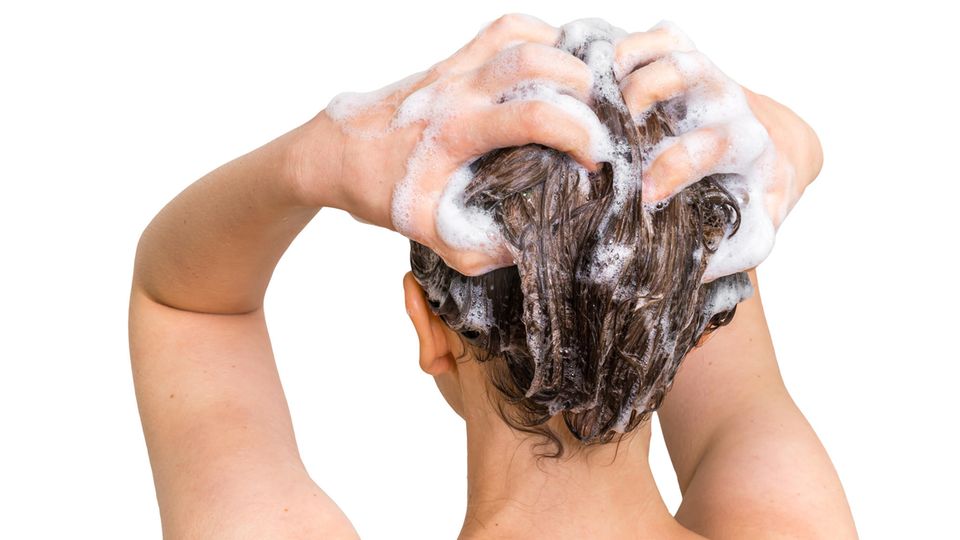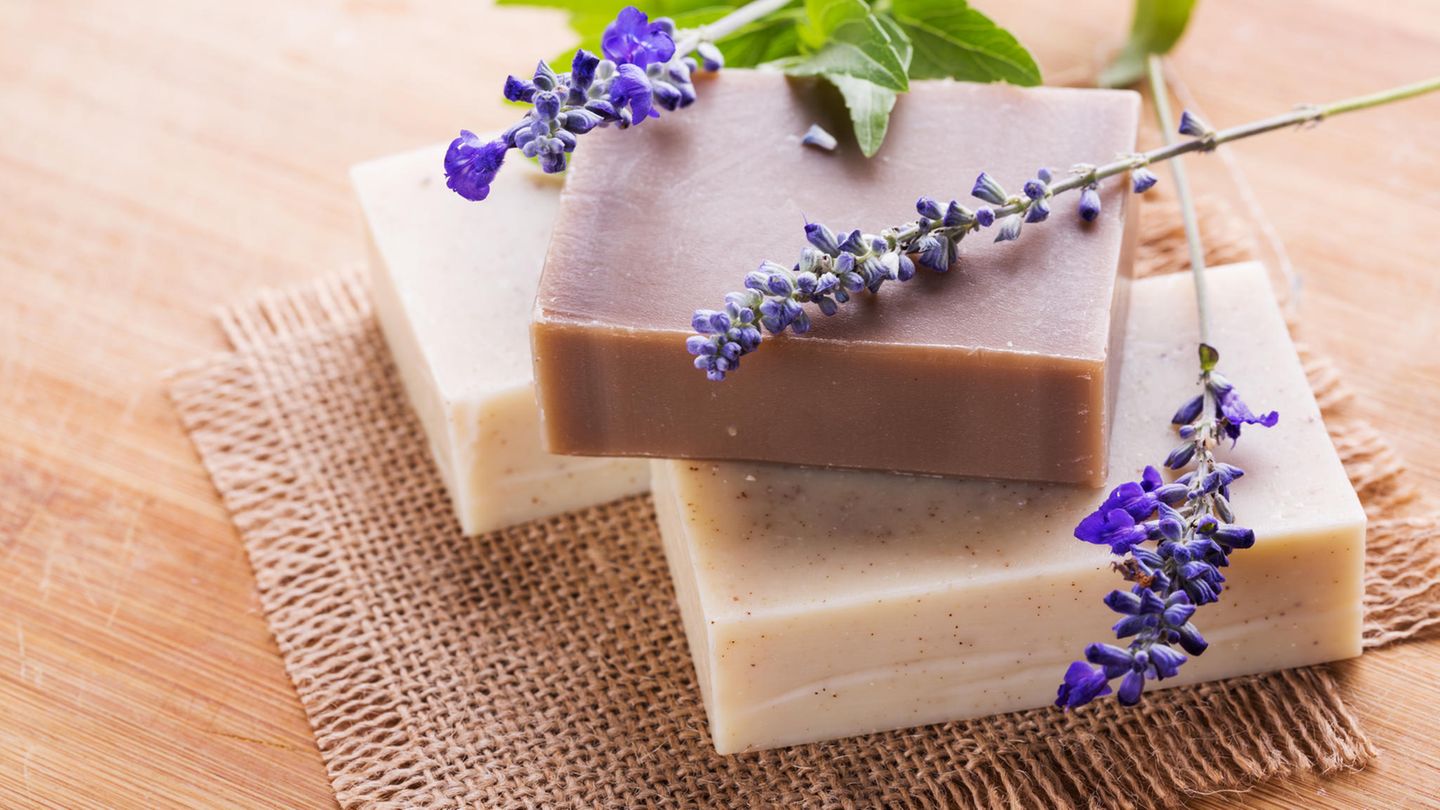For a long time the classic soap was supplanted by conventional products on the market, but now it is celebrating its comeback – especially as a natural alternative to synthetic shampoo. But is hair soap even suitable for everyone’s head (skin)?
Body soap has been used for daily hygiene for thousands of years, but hair soap is only just beginning to set a new trend. The reason for this is the increasing awareness of many people in terms of sustainability. Because the fact is that conventional shampoos produce huge amounts of plastic waste: On average, we use 787 bottles of shampoo in our life. In addition, most products contain synthetic surfactants, preservatives and silicones – ingredients that are unhealthy and can also attack or dry out the scalp. A common industrial soap can also contain substances that are harmful to health, so it is not suitable for washing hair. Soaps for the hair, on the other hand, have noticeably fewer fats such as glycerine or palm oil, so that your hair does not feel greasy after washing. And that is by no means the only advantage that hair soap offers.
What is hair soap made of?
In contrast to normal soap, hair soap is declared as “slightly over-greasy”, which means: It does not contain more than three to five percent pure fat. Instead, vegetable oils, which have a foam-promoting effect, make up the majority (approx. 40 percent) – such as coconut oil. In significantly lower doses, however, castor oil, or avocado oil, they usually only make up ten percent of a hair soap. While , Almond oil and grapeseed oil provide the scalp with moisture, while other ingredients such as shea and cocoa butter or babassu care for the hair. All in all, every hair soap contains only natural ingredients and no synthetic ones.
What are the benefits of hair soap?
The fact that hair soap does not contain any preservatives or parabens, silicones or surfactants is definitely a big plus. The same applies to their virtually non-existent packaging, through which you can save huge amounts of plastic waste. But that’s not all that a hair soap has to offer: On the one hand, it is significantly more economical than a conventional shampoo, which means that it lasts much longer – which also justifies the higher price for a bar of soap. On the other hand, the ingredients of the scalp benefit as they promote the natural environment and thus preserve the patient’s own fat. For this reason, hair soap is also particularly mild.
Who is hair soap suitable for?
Due to the mild ingredients, hair soap is – despite all misconceptions – suitable for all skin types. It is important for you to know that you should still choose a product that is tailored to your special requirements. In other words, if you tend to have oily hair, you need a hair soap with a low level of excess oil. If your hair often feels very dry, you need a hair soap with a higher degree of excess oil. In both cases there is a small selection of suitable products for every skin type, so that there is always something for you. Regardless of which shampoo you have already used in advance.
Which hair soap is recommended?
As already mentioned, the percentage of fat is an important indicator for correct hair care – this also applies to hair soap. So if you tend to have a dry scalp, possibly even psoriasis or neurodermatitis, we recommend you with 60 percent olive oil and 40 percent laurel oil. It is highly lipid replenishing and therefore ideally suited for dry hair. The same applies , a natural soap made from olive oil and cold-pressed coconut or castor oil with ten percent excess fat. It was also developed for sensitive and dry skin types, but can also be used with all other skin types without any problems. If you suffer from oily skin or blemishes, the hair soap is from Nigeria maybe something for you – it’s made from palm kernel oil, the ashes of burnt cocoa pods and shea butter.
How do you use hair soap correctly?

Before using hair soap for the first time, you should test the hardness of the water. The more chalky and harder it is, the more difficult it is to care for your hair. This is partly because the combination of water, lime and soap forms small white flakes, the so-called lime soap, and makes your hair feel rough on the scalp. The softer and less lime the water is, the easier it is to use the hair soap. You can work around this problem on the one hand by using a Use: It filters the limescale out of the water so that soap flakes do not form on your scalp. On the other hand, after washing your hair, you can use an acidic rinse made from apple cider vinegar – it doesn’t even have to be washed out. You will find out how this works in detail.
Other tips to keep in mind when washing with hair soap:
- As soon as you hold the hair soap under running water and rub it over your hair, it starts to foam.
- After you’ve soaped your entire head, rinse the foam out of your hair like you would with a shampoo.
- Avoid conditioner if possible so that your hair can get used to the soap. At first, however, you can still use a conditioner.
Make hair soap yourself: how does it work?

Even if more and more manufacturers are bringing hair soap onto the market, the selection is currently still manageable. If you don’t like a common product, you can make your own hair soap – you only need four different ingredients: 300 grams of curd soap, olive oil, an essential oil of your choice (e.g. ) and water. Then proceed as follows:
Step 1: First the grated finely over a saucepan using a coarse kitchen grater. Then the contents are heated with a little water (preferably little by little) on the stove and stirred until the soap has melted and a homogeneous mass is formed.
Step 2: Only now add about two tablespoons of olive oil and stir the liquid soap until the individual components have combined. Then you can stir ten to twelve drops of the essential oil into the mass – and stir everything well again.
Step 3: If you would like to color the soap – to match the scent – purple, you can still use the appropriate one complete. Finally, the liquid soap is put into a mold (for example from ) poured and must rest overnight – preferably at room temperature.
The next day you can use the finished hair soap straight away.
There is more information here.




